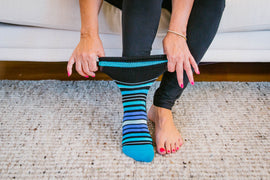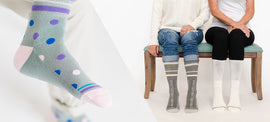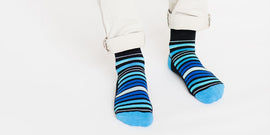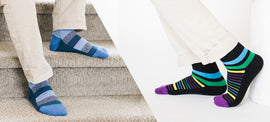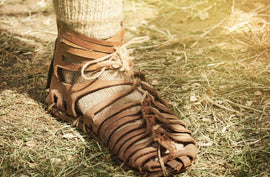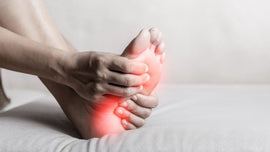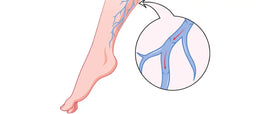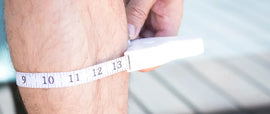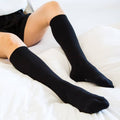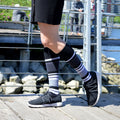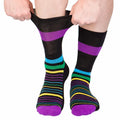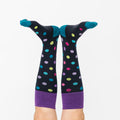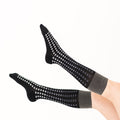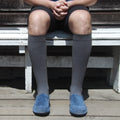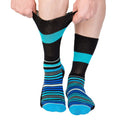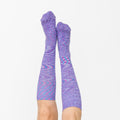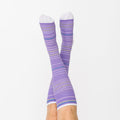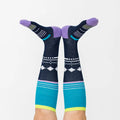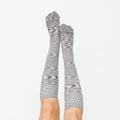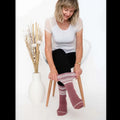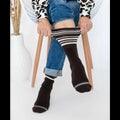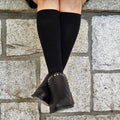How Compression Socks Are Measured
Posted by SIMON LIM

Do you need compression socks but don't know how to measure them? You're not alone! Many people are unsure of how to get the perfect fit when it comes to compression socks. This blog post will walk you through everything you need to know about how compression socks are measured. We will also provide tips on choosing the right size and style of compression socks for your needs.
Compression socks are an essential part of many people's lives. Compression socks can provide much-needed relief for those who suffer from edema, DVT, or varicose veins. They can also be helpful for athletes who need to improve their circulation or recover from a strenuous workout. No matter your reason for wearing compression socks, choosing the correct size is vital.
When Should You Wear Compression Socks?
Many people can benefit from wearing compression socks, especially if they have circulatory issues. Here are some of the most common reasons why you should wear compression socks:
- When you are pregnant
- When you are recovering from surgery and on bed rest
- When you have a job that requires you to stand or sit for long periods
- When you have a history of circulatory problems
- During long flights or car rides
- During exhaustive exercise
Fitting Compression Socks
To perform correctly and benefit your health, you must first understand how compression socks are measured to achieve a decent fit for the socks. If your socks are too loose, they won't provide the level of compression you need. On the other hand they can be uncomfortable and even cause pain if they're too tight. That's why knowing how to measure compression socks is so important.
How Should Compression Socks Feel?

When looking for compression socks, you want to make sure they are neither too tight nor too loose. But what does that imply in practical terms? Compression socks are designed to fit snugly throughout the leg to provide maximum comfort.
How Compression Socks Are Measured?
It can be hard to figure out how to measure compression socks for the first time. A different method is used for every type of sock but take note of these two general tips for measuring compression socks:
- Measurements should be taken in the morning because our legs naturally swell through the day
- Measurements of the ankles are always done first
Knee-high Compression Socks
Knee-high compression socks fall a few inches below the knee. It's good for your feet and ankles to prevent them from getting swollen. Follow these steps to figure out how to measure for a knee-high compression sock:
- Ankle circumference: loop the measuring tape above your ankle bone on the most narrow part and record
- Calf circumference: loop the measuring tape around the widest part of your calf and record
- Circumference of the leg just below the knee: loop a measuring tape 2-3 cm below the back of the knee and record
- Calf Length: sit in a chair and bend your knees into an "L" shape. Measure the length from where your knee bends up to the base of your heel and record
- Repeat with the other leg
Thigh High Compression Socks
Thigh-high compression socks are usually a few inches above the knee. It provides more compression from the ankle and gradually decreases as you go up the leg. Follow these steps to figure out how to measure for a thigh-high compression sock:
- Ankle circumference: loop the measuring tape above your ankle bone on the most narrow part and record
- Thigh circumference: loop the measuring tape around the widest part of your thigh and record
- Thigh Length: Measure from the gluteal fold up to the base of your heel and record
- Repeat with the other leg
Compression Stockings
Compression stockings cover all of your legs. The steps for measuring a compression stocking are basically the same for thigh-high compression socks.
How to Choose the Right Compression Gradient

Choosing the proper pressure gradient is as essential as determining the correct size. A doctor can help you figure out which level is best for you, but you can also calculate this out yourself. Here is a compression graduation guide to help you.
Compression Graduation Guide
- Mild 8-15 mmHg graduation: recommended for individuals sitting or standing for a prolonged period and pregnant women.
- Medium 15-20 mmHg graduation: recommended for first-time compression socks users and individuals with slight varicose and spider veins.
- Firm 20-30 mmHg graduation: recommended for individuals with moderate to severe varicose veins and people after surgery
- Extra Firm 30-40 mmHg graduation: recommended for individuals with severe varicose veins.
- Prescription 40-50 mmHg graduation: recommended for individuals with serious venous diseases.
Key Takeaways
Wearing compression socks can help you in various ways. Varicose veins can be prevented, as can edema, by wearing compression socks, and they can also help with pregnancy. Athletes, sedentary employees, persons who have recently undergone surgery, and frequent travelers can benefit from wearing compression socks.
It can be a challenge when it comes to knowing how compression socks are measured, but if you take your time and follow our guide, you'll be well on your way to improving your health and living a good life!
SHARE:




